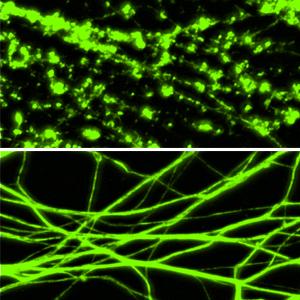- Can axon degeneration be prevented in CMT?
-
I’m often asked if a therapy for one type of CMT could be beneficial in another. There are over 100 different genes known to cause CMT; they either directly disrupt myelin or axon integrity of peripheral nerves, causing neuropathy. Certainly, the large number of genes that cause CMT adds to the complexity of drug development for CMT. Despite the genetic complexity in CMT, axon degeneration of peripheral nerves is at the root of all CMT2 subtypes but has also been detected in all types of CMT.
Axon degeneration leads to the characteristic symptoms of CMT including muscle weakness, atrophy and deformities in the feet, legs, arms and hands. Drugs which target axon degeneration could be highly beneficial as a disease-modifying therapy in multiple forms of CMT. Indeed, several approaches to prevent axon degeneration are currently being tested in multiple models of neurodegeneration by companies.
One such approach is inhibition of SARM1, a key mediator of axon degeneration in multiple neurodegenerative models. A recent review discusses the evidence that SARM1 inhibitors could be beneficial in multiple forms of CMT. Disarm Therapeutics is developing SARM1 inhibitors for patients with severe neurological diseases including multiple sclerosis, amyotrophic lateral sclerosis, glaucoma, and peripheral neuropathies.
Another target that may be beneficial to modify axon degeneration is HDAC6. Inhibiting HDAC6 helps to maintain proper transport of molecules along axons thereby contributing to the health of neurons. Multiple companies such as CKD Pharmaceuticals, Regenacy Pharmaceutics , StarWise Therapeutics and Augustine Therapeutics are developing and testing HDAC6 inhibitors in different models of peripheral neuropathy including CMT.
These drugs not only address the pain of neuropathy, but also it’s believed that they could improve peripheral nerve function. And because these drugs target pathways that appear to be common across many forms of CMT, it’s possible that people with undiagnosed forms of CMT could ultimately benefit from the treatments as well. These drugs still need further development before they are ready for clinical trials. The CMT Research Foundation is partnering with different companies developing the drugs to determine their potential for CMT. We will keep you apprised as the projects progress.

